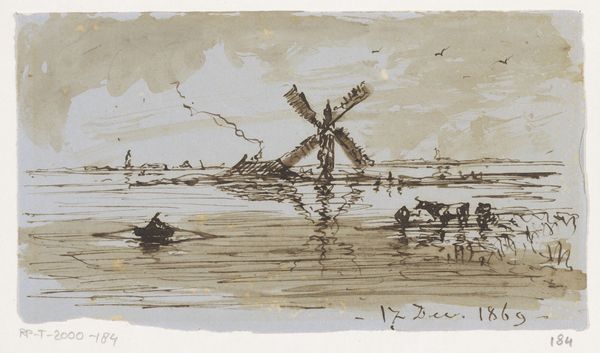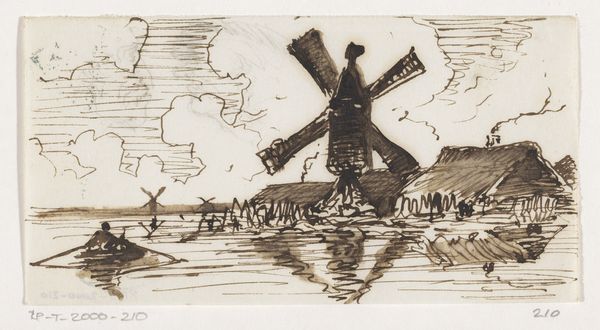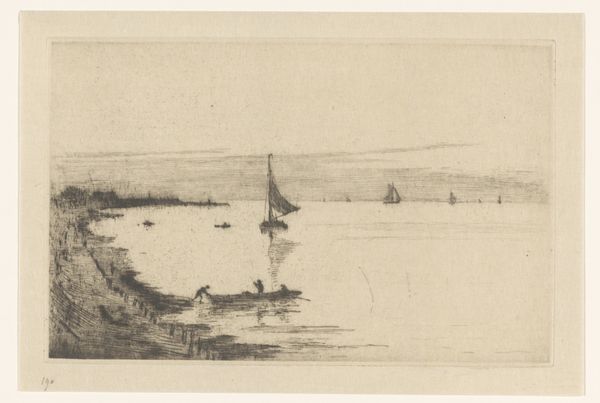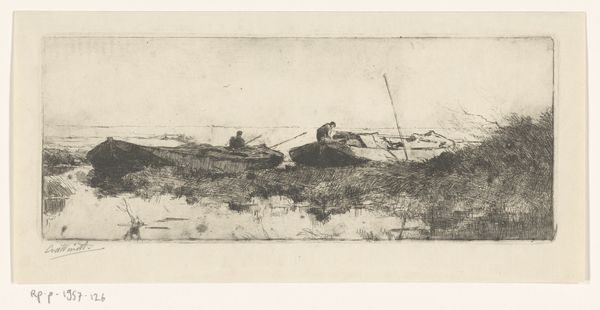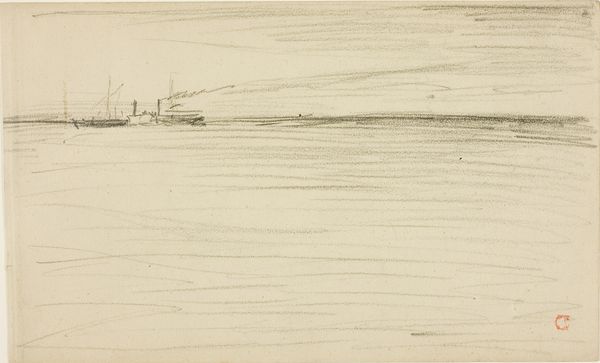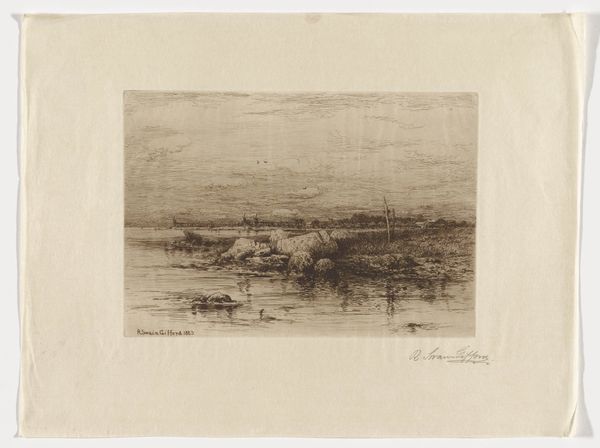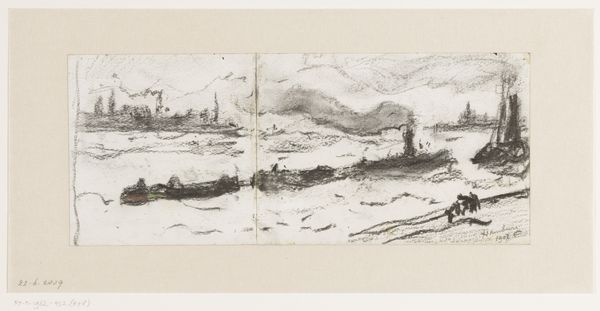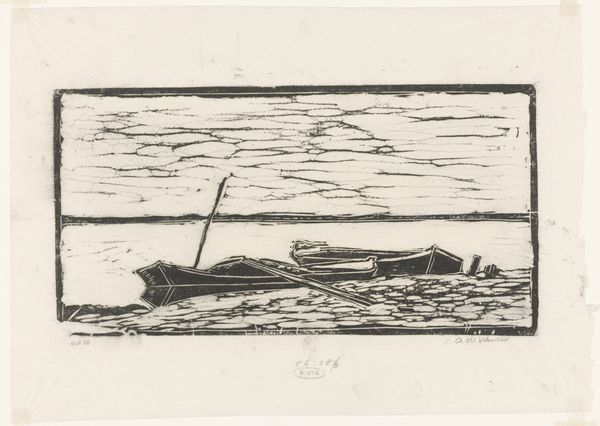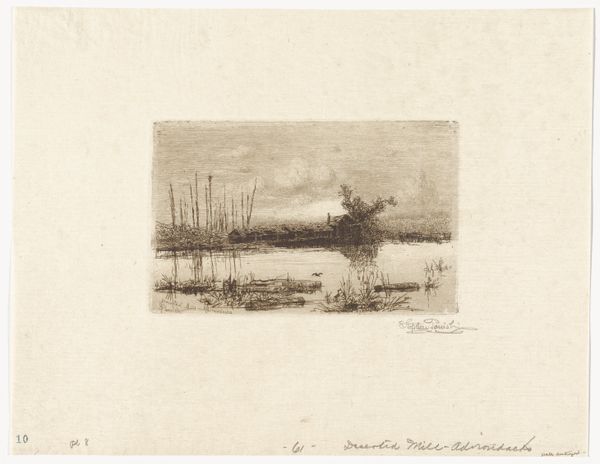
Dimensions: height 100 mm, width 300 mm
Copyright: Rijks Museum: Open Domain
Johannes Tavenraat made this quick pen and ink drawing of a Dutch river landscape sometime in the mid-19th century. It’s a peaceful scene: a man rows a small boat, ducks swim nearby, and a horse-drawn carriage makes its way along a path, all under the watchful eye of a distant windmill. But it’s important to remember that the Dutch landscape has long been a site of economic activity and contestation, not just bucolic beauty. Windmills were crucial for land reclamation, and waterways served as vital trade routes. By the 19th century, the Netherlands was also undergoing rapid industrialization and urbanization. Tavenraat's sketch can be understood as part of a long tradition in Dutch art of representing the landscape as both a source of national pride and a reflection of changing social and economic conditions. To understand this fully, we can consult period maps, economic surveys, and the records of local water boards to better understand the complex relationship between the Dutch people and their land. This way we see how art is always embedded in a specific time and place.
Comments
No comments
Be the first to comment and join the conversation on the ultimate creative platform.
